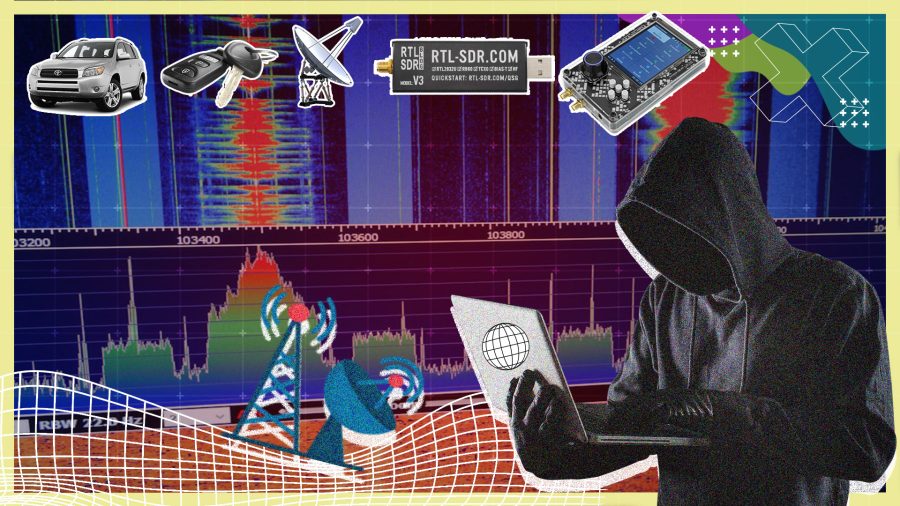What is So Special About RTL2832/U Chips?
When discussing Software-Defined Radios (SDRs) and their influence on hardware development, one name frequently pops up: RTL2832/U chips. These chips, originally designed for digital TV tuners, have captured the imagination of radio enthusiasts, engineers, and developers worldwide. But what makes these chips so special? Let’s explore their unique attributes and why they’ve become a cornerstone of experimentation and innovation in the SDR space.
The Magic of SDR
Before diving into the specifics of RTL2832U chips, it’s essential to understand the broader context of SDRs. Software-Defined Radios have revolutionized how engineers and hobbyists approach radio-frequency (RF) design. Unlike traditional hardware-centric radios, SDRs use software to process radio signals, offering unprecedented flexibility.
In product development, SDRs enable rapid prototyping, allowing engineers to test multiple ideas and iterate designs at lightning speed. Traditional methods of designing radios from off-the-shelf components often lack this agility. SDRs, on the other hand, make it possible to implement and modify radio designs quickly, saving valuable time during the development cycle.
While SDRs may not always be the final solution in high-volume production due to cost considerations, they are invaluable in the early stages of development. They reduce design cycle times, offer unparalleled adaptability, and empower innovators to experiment without committing to expensive hardware redesigns.
To truly appreciate the significance of SDRs like the RTL2832/U, we can draw parallels from the evolution of digital logic. Decades ago, engineers relied on hardwired chips with fixed logic gates. This approach, while functional, was limiting. Over time, programmable logic devices (PLDs) and field-programmable gate arrays (FPGAs) emerged, offering more flexibility. Engineers could reprogram these devices as needed, saving both time and costs.
Similarly, SDRs have brought programmability to RF design. Just as FPGAs allowed digital designs to be updated and refined without building new hardware, SDRs enable RF systems to adapt and evolve. This flexibility has even led to SDRs being incorporated into final products, especially in cases where time-to-market is critical or production volumes are low.
The Role of RTL2832/U Chips in the Software Defined Radios
The RTL2832/U chip is a standout in the world of SDRs. Initially created for digital TV tuners, it has been repurposed by radio enthusiasts for a variety of uses. This adaptability is where the chip truly shines. Its ability to be hacked and reprogrammed has unlocked a wealth of possibilities, making it a favorite for experimentation and learning.
Key Features of RTL2832/U Chips
- Affordability
One of the most compelling aspects of the RTL2832/U chip is its low cost. Compared to traditional SDR setups, which can be expensive, these chips provide a budget-friendly entry point for hobbyists and professionals alike. - Versatility
The chip supports a wide range of frequencies and applications. Whether you’re interested in listening to FM radio, tracking aircraft signals (ADS-B), or exploring amateur radio bands, the RTL2832/U chip can handle it all. - Community and Resources
The popularity of the RTL2832U chip has fostered a vibrant community of users and developers. Online forums, guides, and open-source tools abound, making it easy for newcomers to get started and for experienced users to push the boundaries of what’s possible. - Open-Ended Experimentation
The flexibility of the RTL2832U chip allows users to experiment with various SDR applications. From weather satellite decoding to monitoring public service bands, the chip has been a gateway to countless projects and discoveries.
Practical Applications of RTL2832/U Chips
The RTL2832/U chip’s capabilities have led to its adoption in numerous practical applications, including:
- Radio Astronomy
Amateur astronomers use the chip to study celestial phenomena by capturing radio waves emitted by stars and other cosmic objects. - Weather Satellite Imaging
With the right software and setup, users can decode images and data transmitted by weather satellites, offering a unique perspective on meteorology. - ADS-B Aircraft Tracking
Aviation enthusiasts use the chip to track aircraft positions and movements by decoding ADS-B signals. - Security Research
The chip has also found use in cybersecurity, where researchers analyze wireless communications to identify vulnerabilities.
The Future of RTL2832/U Chips and SDRs
The journey of the RTL2832/U chip highlights a broader trend: the increasing integration of SDRs into everyday products and applications. While initially limited to prototyping and hobbyist projects, SDR technology is becoming more mainstream. As development costs decrease and technology advances, we can expect to see SDRs, including chips like the RTL2832/U, in more consumer products and professional solutions.
Moreover, the democratization of SDR technology, fueled by affordable chips like the RTL2832/U, is opening doors for innovation across industries. From telecommunications to IoT devices, the potential applications are virtually limitless.
Why RTL2832/U Chips Matter
The RTL2832/U chip represents more than just an affordable SDR option—it embodies a shift in how we approach hardware development. By enabling experimentation, fostering creativity, and reducing barriers to entry, it has empowered a generation of innovators to explore the world of radio-frequency technology.
Whether you’re a hobbyist looking to decode satellite signals or an engineer prototyping the next big thing in wireless communication, the RTL2832/U chip is a tool worth exploring. Its affordability, versatility, and robust community support make it a standout in the SDR landscape, proving that sometimes, the most unexpected innovations come from repurposing technology in ingenious ways.
Expand Your Knowledge with Expert-Led Courses
For those inspired by the potential of SDR and eager to dive deeper, two exceptional courses can help you master the art and science behind this transformative technology:
- Mastering Software Defined Radio (SDR): GNU Radio and SDR++
This comprehensive course equips you with the tools and knowledge to work with SDR platforms like GNU Radio and SDR++. You’ll explore signal processing, data decoding, and practical applications to enhance your skills and take your projects to the next level.

These courses are tailored to provide both foundational insights and advanced techniques, making them ideal for anyone interested in SDR or telecommunications technology.
You can also check this video where i compare 4 different SDR Devices :



